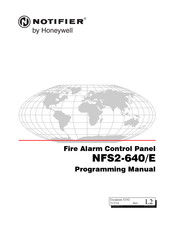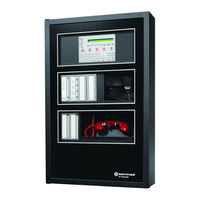Honeywell Notifier NFS2-640/E Manuals
Manuals and User Guides for Honeywell Notifier NFS2-640/E. We have 4 Honeywell Notifier NFS2-640/E manuals available for free PDF download: Operation Manual, Programming Manual, Manual, Operating Instructions
Honeywell Notifier NFS2-640/E Operation Manual (477 pages)
Fire Alarm Control Panel
Brand: Honeywell
|
Category: Control Panel
|
Size: 28 MB
Table of Contents
Advertisement
Honeywell Notifier NFS2-640/E Programming Manual (126 pages)
Fire Alarm Control Panel
Brand: Honeywell
|
Category: Control Panel
|
Size: 2 MB
Table of Contents
Honeywell Notifier NFS2-640/E Manual (42 pages)
Brand: Honeywell
|
Category: Control Panel
|
Size: 1 MB
Table of Contents
Advertisement
Honeywell Notifier NFS2-640/E Operating Instructions (1 page)
Brand: Honeywell
|
Category: Security System
|
Size: 0 MB



